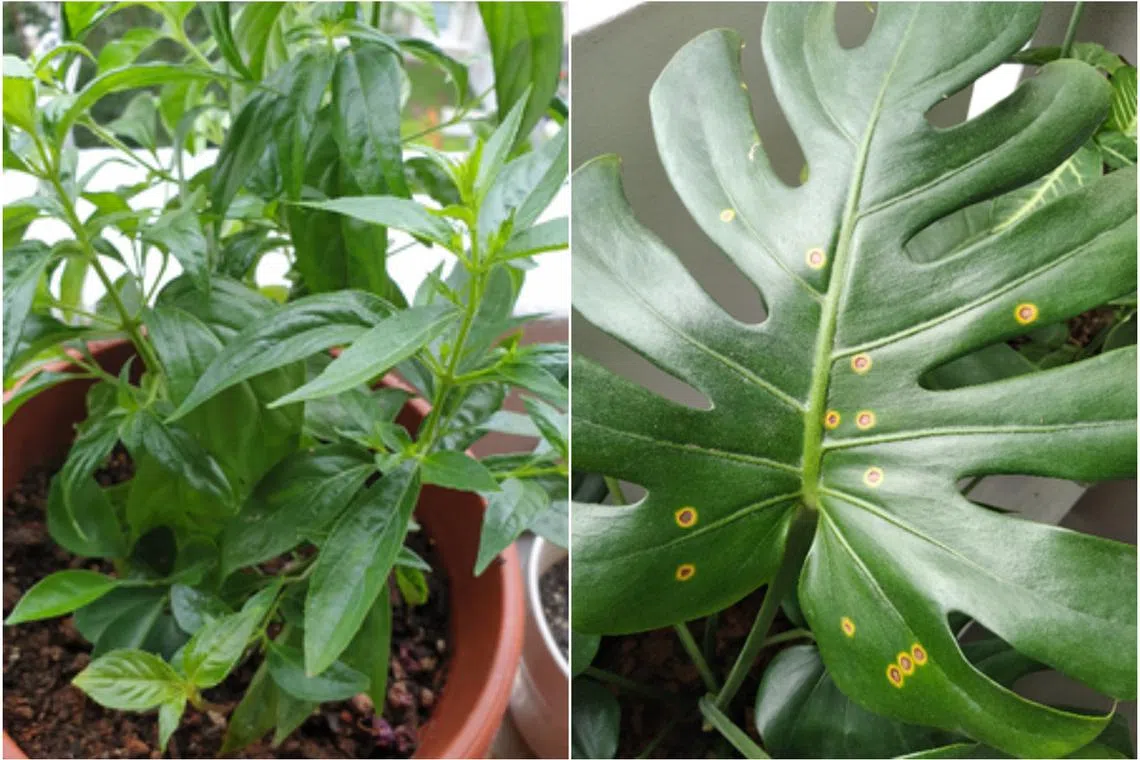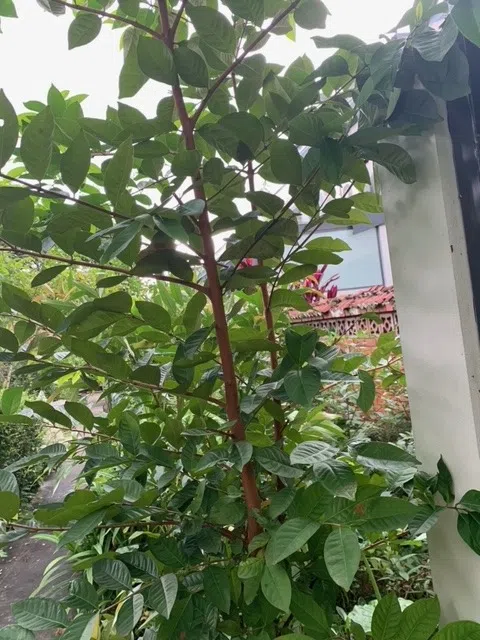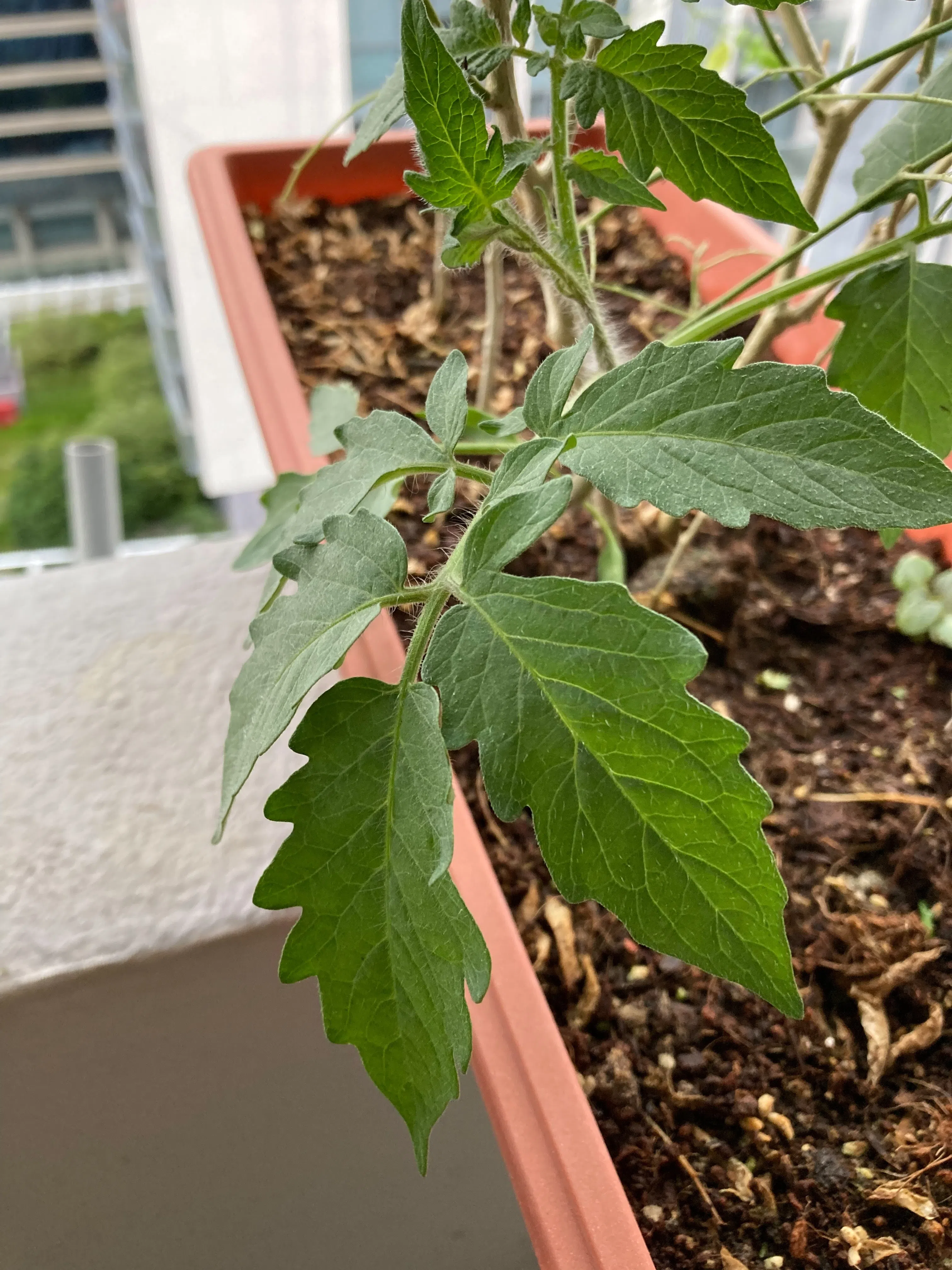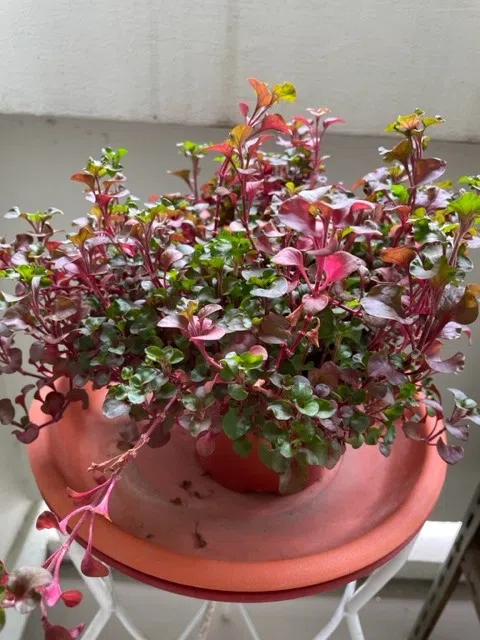Root Awakening: Plant is likely the King of Bitters
Sign up now: Get ST's newsletters delivered to your inbox

The Bitterweed (left) and a Monstera leaf.
PHOTOS: LIN MEIXIU, SEAN LIM
Wilson Wong
Follow topic:
Plant is likely the King of Bitters
Many small stalks have started sprouting in my pot and are growing quite fast. What are they? One plant has small red flowers and sheds leaves constantly.
Lin Meixiu
The plant appears to be the Bitterweed, also known as the King of Bitters. Its botanical name is Andrographis paniculata and it produces tiny white flowers with red markings on the petals. Wait for the plant to flower to confirm its identity.
This herb is used in traditional Chinese and Indian medicine to reduce fever, inflammation, blood sugar and high blood pressure. It produces many seeds, so new young plants may start to appear in surrounding flower pots.
Monstera’s leaf likely infected with fungal disease

This Monstera’s leaf is likely infected with a fungal disease.
PHOTO: SEAN LIM
My Monstera plant has developed yellow spots on its leaves. What is causing this to happen and how do I get rid of the spots?
Sean Lim
Your Monstera’s leaf is likely infected with a fungal disease. It is a common occurrence in plants that are grown in a shady spot with poor air circulation. Once the leaves are infected, the marks are permanent. If only one leaf has been infected, you can prune it. Try to prevent this from occurring in new leaves.
The Monstera is shade-tolerant but should not be grown in deep shade. It should be placed near a window where it can receive filtered sunlight for at least six hours a day, and can even adapt to higher light levels. Plants that get enough sunlight and air circulation will be stronger and less prone to disease. You can also buy preventive fungicide from local nurseries and apply it to your plant’s leaves.
Shrub is likely the Indonesian Bay Leaf

The Indonesian Bay Leaf's leafy branches are often sold in local wet markets for use in Malay and Indonesian cooking.
PHOTO: ANNIE GOH
Is this the Bay Leaf Tree?
Annie Goh
This plant is likely the Indonesian Bay Leaf, also known as Salam. Its botanical name is Syzygium polyanthum and it is native to Singapore. Leafy branches are often sold in local wet markets for use in Malay and Indonesian cooking.
It can grow into a large tree if planted in the ground. However, you can also confine it to a large pot and prune it to a manageable size to produce leaves for use in cooking.
Tomato plant’s furry leaves have an odour

The hairy leaves of the tomato plant emit a scent when rubbed between fingers.
PHOTO: YVONNE LOO
This plant is growing out of the same pot as my blue pea plant. It has a hairy stem. What is it and is it edible?
Yvonne Loo
The plant with hairy leaves appears to be the tomato (Solanum lycopersicum). The leaves emit an odour when rubbed between fingers. It may be that tomato seeds were previously sown in the same trough.
Vining cultivars of the tomato plant can be quite large and will need support to grow on. The tomato plant needs at least six hours of direct sunlight a day, as well as moist, well-draining and fertile growing media. More heat-tolerant varieties are more rewarding to grow in the lowland tropics, as they produce fruit more consistently.
Alternanthera cultivar sometimes called Thai Watercress

The Thai Watercress' true red hue appears with enough direct sunlight.
PHOTO: JOEY CHAN
What is this plant? It grows quickly and its leaves change colour from green to red. Is it edible and does it have any medicinal uses?
Joey Chan
The plant appears to be a cultivar of Alternanthera ficoidea. It has red foliage and is sometimes called the Thai Watercress by local gardeners, but it is not related to the true watercress.
The Thai Watercress is edible, but not regarded as a medicinal plant. Its raw leaves can be tough and need to be boiled in soup to be made more palatable. It is easily propagated via stem cuttings and requires direct sunlight for its true red hue to appear.
Answers by Dr Wilson Wong, an NParks-certified practising horticulturist, parks manager and ISA-certified arborist. He is the founder of Green Culture Singapore and an adjunct assistant professor (Food Science & Technology) at the National University of Singapore.
Have a gardening query? E-mail it with clear, high-resolution pictures of at least 1MB, if any, and your full name to stlife@ sph.com.sg. We reserve the right to edit and reject questions.

